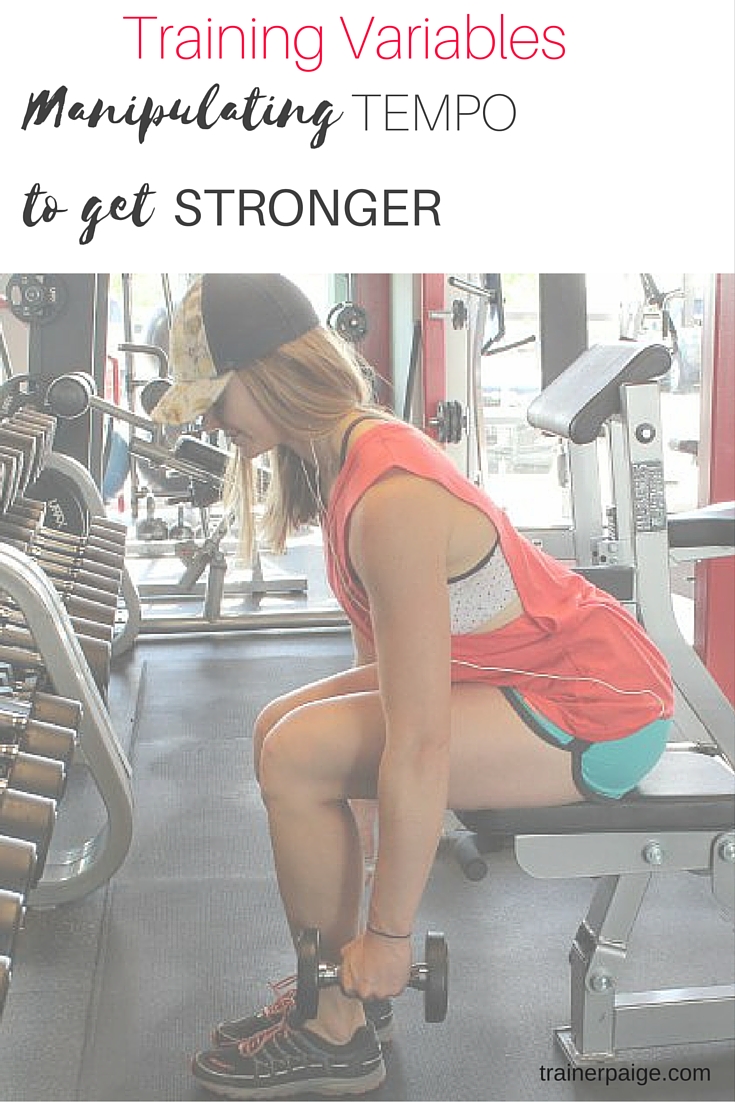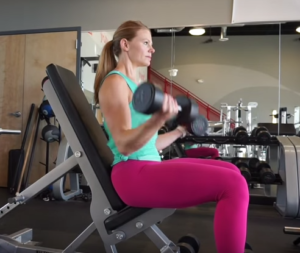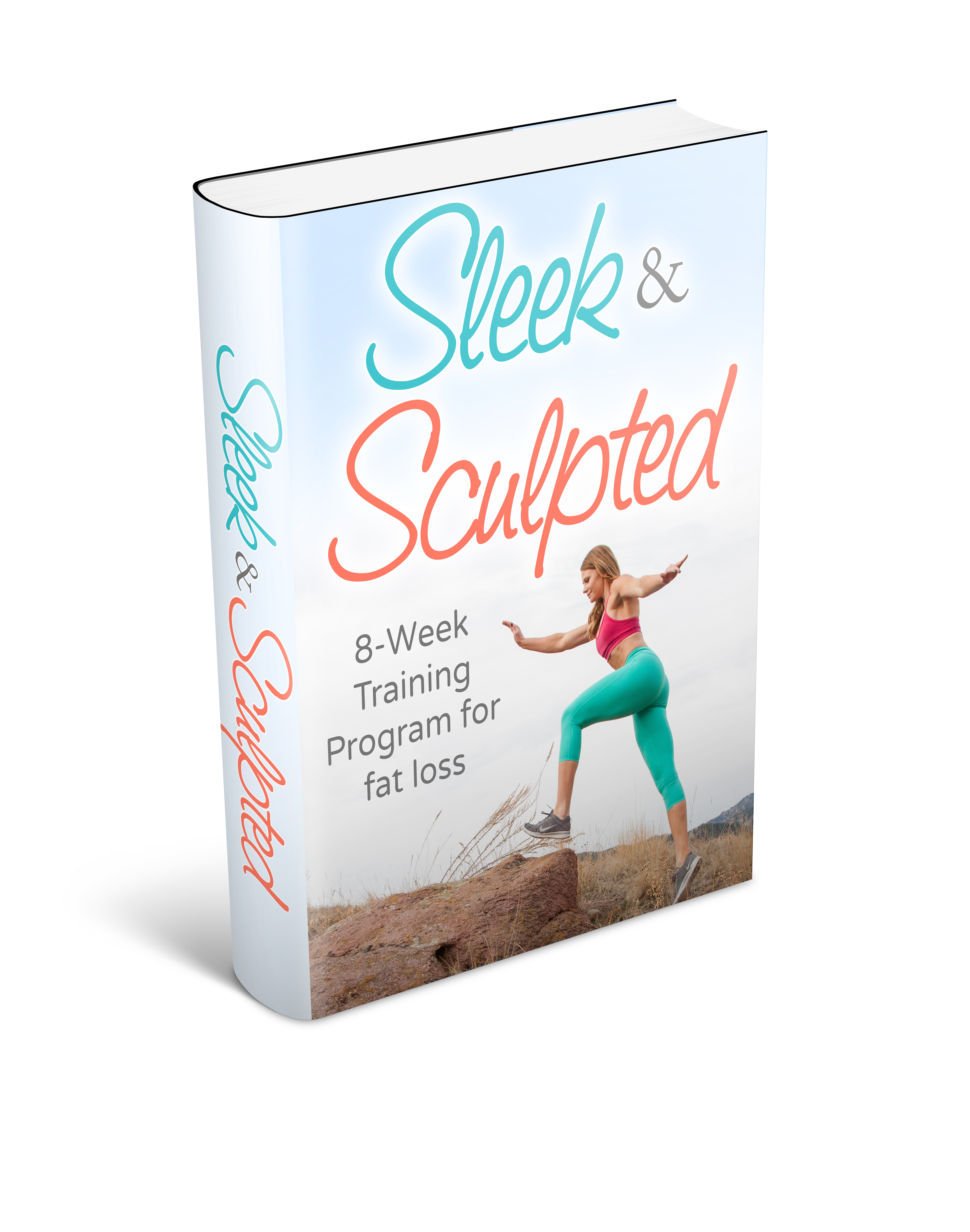Some thoughts and discussions from me.

Good morning!
I hope you had a wonderful weekend. Mine was pretty darn great, despite some serious tooth pain. I went into the dentist on Friday to get an x-ray, but the dentist isn’t in until this week, soooo I’ll be headed there again today to see if there’s a root canal in my future.
Despite that debacle (and being on some mild pain killers) I did manage to have a great weekend! It started off with a girls night with my friend, Katie, and then Saturday morning I had my first session with my new trainer, and then Shane and I went hiking in Rocky Mountain National Park.

Sunday was spent getting in some hammock time, doing a glute workout that I shared on Snapchat (TrainerPaige,) and walking in the park – and writing this post!
Training Variables: Manipulating Tempo to Get Stronger
So, there are many training variables to use in order to progress a workout, some of which I talked about in this post last year. They include:
- frequency
- duration
- density
- stability
- volume
- load
- range of motion
- tempo
–to name a few. Today, I’d like to focus on that last one – tempo. Manipulating your time under tension is a great way to progress an exercise. As I mentioned in this post, I’m a big fan of extending the eccentric contraction, as well as adding a “pause” at the bottom of a movement. Coincidentally, that’s exactly what I’m currently doing with my new trainer.
But let me explain a little further about what I mean by this:
So, let’s say we have a tempo of 4210. Let’s break that down.
4 = the eccentric contraction, or the lengthening of the muscle
2 = isometric contraction at the middle (bottom or top, depending on the movement)
1 = concentric contraction, or the shortening of the muscle
0 = isometric contraction at the top
So, for a biceps curl, starting in the flexed position, it’d be 4 counts lowering the weight, 2 counts at the bottom, contracting the triceps, 1 count back up, and 0 at the top.

But, as I see it, this probably isn’t the best way to get the most out of this exercise because it’s not maximizing the most time under tension (tempo) where there’s the most torque.
With a 4210 tempo, we are getting a lengthened eccentric contraction, which is good, but where we’re spending the next longest time is when the muscle is at rest, and if we’re trying to get the most out of each rep, this is a bit counterintuitive.
Instead, the point at which the load is next heaviest is when the muscle is contracted and the weight/load is pulling downward at the forearm. So, it’d make more sense to have an isometric pause here, and no pause at the bottom. So instead, we’d probably program the tempo as 4012.
Make sense?
Let’s take another movement – like the Cable Deadlift Pull Through
Since the force is pulling my hips backward, it would make sense to both take the isometric hold at the top of the motion and the bottom of the motion. Now, if I were using a resistance band, it’d make more sense to take the isometric hold at the top of the motion (when my hips are fully extended) since the torque would be the highest when the band is stretched the furthest, which would be in this position. Thusly, there’d be more force for my glutes to contract against.
Make sense now?
Admittedly, it can be a little tricky, which is why I usually only introduce tempo training to online clients I’ve been training for a little while, or those who are seasoned athletes.
And again, tempo training is just ONE way to see the gainz. If you found this helpful (or at the very least, interesting) and would like me to dive into more about some of the other training variables, let me know, and I’ll write up a post 🙂
Have a lovely week!
XO,
TrainerPaige
Get my brand NEW training program and nutrition plan, Sleek & Sculpted! You’ll get 8 weeks of workout programming with NEW workouts every single day, laid out in a 55+ page training manual with an exercise library with over 80+ video demos. I also show you how to easily extend it to 12, 16, or 24 weeks.
The workouts are programmed for fat loss, but I’ve also designed them to have a large focus on shaping the glutes and leaning out the midsection.
In the nutrition plan, you’ll get everything you need to know – with a plan to fuel your workout programming and reach your goals. Get meal planning templates, grocery toolkits, snacking guides, and 30+ recipes to switch in and out of the nutrition plan designed by registered dietitian, Melissa McDonough who has helped many many women in their wellness journeys.
Join the Sleek and Sculpted community today, and you’ll see the program and plan in your inbox as soon as you purchase.



Still loving the new look!!! This is just a great reminder, I think just like we change weight why wouldn’t we change other factors! I am definitely going to play with this!
Always looking for new ways to see the gainzzzzz 🙂 Thanks for sharing Paige! I always learn something new when I visit your blog!
XO!
First, I love the new look of your website or new to me look 😉 This is such great information and something that I haven’t really thought about but makes so much sense. Can’t wait to play with this at the gym!
Thanks, Christine!!
SO awesome. I will definitely use this reminder with my own workouts AND my programming for clients 😉 Felt the difference with those Sumo Tempo DLs this AM too!
Love the photo at the top of your site. What a great reminder on ways to workout better!
I love the new look to your site! And thanks for all the great info in this post, you broke it down in such an easy way to understand.
Sonali- The Foodie Physician recently posted…Dining with the Doc: Spiced Lentil & Walnut Patties with Roasted Red Pepper Walnut Sauce